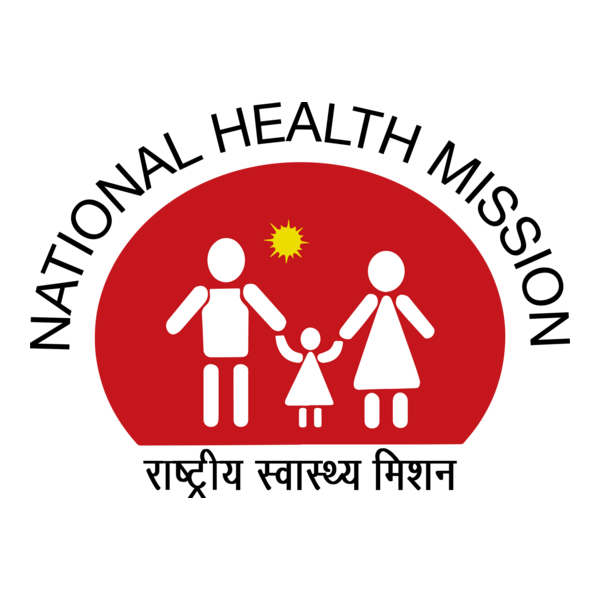Sickle Cell
National Sickle Cell Anemia Elimination Programme Disease Control Programme
-
Sickle Cell anemia is a genetic disorder in which the red blood cells can become sickle-shaped due to abnormal sickle Hemoglobin (shaped like a “C”). Normal red blood cells are smooth and round, like a doughnut without a hole, and they move easily through blood vessels to carry oxygen to all parts of the body. However, sickle-shaped cells do not move easily through blood; they are stiff, sticky, hard, and tend to form clumps, getting stuck in blood vessels. The clumps block blood flow to limbs and organs, causing pain, infections, and organ damage (pain crisis & respiratory infections).
- Sickle cell is more prevalent in tribal populations compared to the general population. There is no curative treatment for sickle cell disease.
- Types of Sickle Cell:
-
Sickle Cell Trait/Carrier
– Sickle Hemoglobin (HbS) less than 40%. These individuals are generally healthy but are responsible for transmitting the disease to the next generation.
-
Sickle Cell Disease/Sufferer
– HbS more than 40%. Patients are at risk of bacterial infections, joint pain, and vital organ failure.
The Government of India (GOI) launched the National Sickle Cell Elimination Mission on 1st July 2023, under which mass screening is being carried out in 21 districts of Maharashtra, including tribal districts like Thane, Nashik, Nandurbar, Amravati, Gondia, Gadchiroli, Palghar, Nagpur, Wardha, Chandrapur, Bhandara, Yavatmal, Dhule, Jalgaon, Nanded, Buldhana, Washim, Akola, Aurangabad, Raigad, and Hingoli.
- The mission targets the elimination of the disease by 2047, with a goal of screening 63 lakhs people from the 0 to 40-year age group between 2023-2025. As of 16/01/2025, the state has achieved 53 lakhs screenings (82%).
- GOI has also launched a sickle cell web portal and mobile app where screening data is uploaded by each district.
- Manpower approved for screening, treatment, and awareness includes District Sickle Cell Coordinator, Sickle Cell Counsellor, Laboratory Technician, Taluka Sickle Cell Program Assistant, and Counsellors in the districts.
Objectives of the Program:
- Sickle Cell Screening facilities at PHC, RH, WH & DH by Solubility testing.
- Confirmation of Sufferer/Carrier by HPLC testing.
- Improvement in the quality of life of patients through regular treatment (Hydroxyurea & Blood transfusion as needed).
- Marriage counseling for carriers and sufferers through Genetic Card.
- Awareness regarding sickle cell disease transmission to the next generation and its prevention.
- Prenatal diagnosis to prevent the birth of new cases of sickle cell disease.
Services Provided Under the Sickle Cell Disease Elimination Control Program:
- Free Solubility testing as a screening test.
- Free HPLC testing for disease confirmation.
- Counseling on disease transmission, prevention, diagnosis, and management.
- Prophylactic & Symptomatic treatment (e.g., Hydroxyurea & Folic Acid).
- Regular health check-ups for patients on Hydroxyurea (CBC, LFT, KFT) and follow-up for sufferers.
- Free blood transfusions as per the need for sickle cell sufferers.
- Under the Sanjay Gandhi Niradhar Yojna (GR dated 03 Nov 2018), Rs. 1000/- monthly will be given to sickle cell patients as support.
- Sickle cell disease is included in MJPJAY/PMJAY for management.
- IEC activities including day celebrations on 19th June and sickle cell week celebrations from 11th Dec to 17th Dec annually in all 21 districts.
| Sr. No. | District Name | No. of PHCs | No. of RH/SDH | No. of DH | No. of WH/Multi-Specialist Hospitals | No. of Medical Colleges |
|---|---|---|---|---|---|---|
| 1 | Thane | 33 | 8 | 1 | 0 | 1 |
| Total | 21 | 1030 | 257 | 16 | 5 | 8 |
Hemophilia
- Hemophilia is a serious genetic disease in which there is a deficiency of blood clotting factors.
- There are approximately 5,000 hemophilia patients in the state at present.
- For the treatment of these patients, a total of 36 day-care centers have been set up in all the districts.
- Anti-Hemophilic Factors (Factor VII, VIII, IX, FEIBA) are used for the treatment of these patients.
| Types of Hemophilia | Hemophilia A (Factor VIII Deficiency) | Hemophilia B (Factor IX Deficiency) | Hemophilia Inhibitor (Requires Factor VII and FEIBA) |
|---|---|---|---|
| Total Patients | 4200 | 550 | 260 |
Thalassemia
- Thalassemia is a serious genetic disease where the amount of hemoglobin produced in the blood is very low, leading to low hemoglobin levels in patients.
- These patients require regular blood transfusions.
- Free blood is provided to these patients from all blood banks in the state (total 393 blood banks).
- There are approximately 10,000 patients with this disease in the state.
- These patients also require regular iron-reducing drugs.
- Regular blood transfusions are provided in district hospitals/medical colleges.
Beneficiary:
Citizen
Benefits:
As above
How To Apply
online






